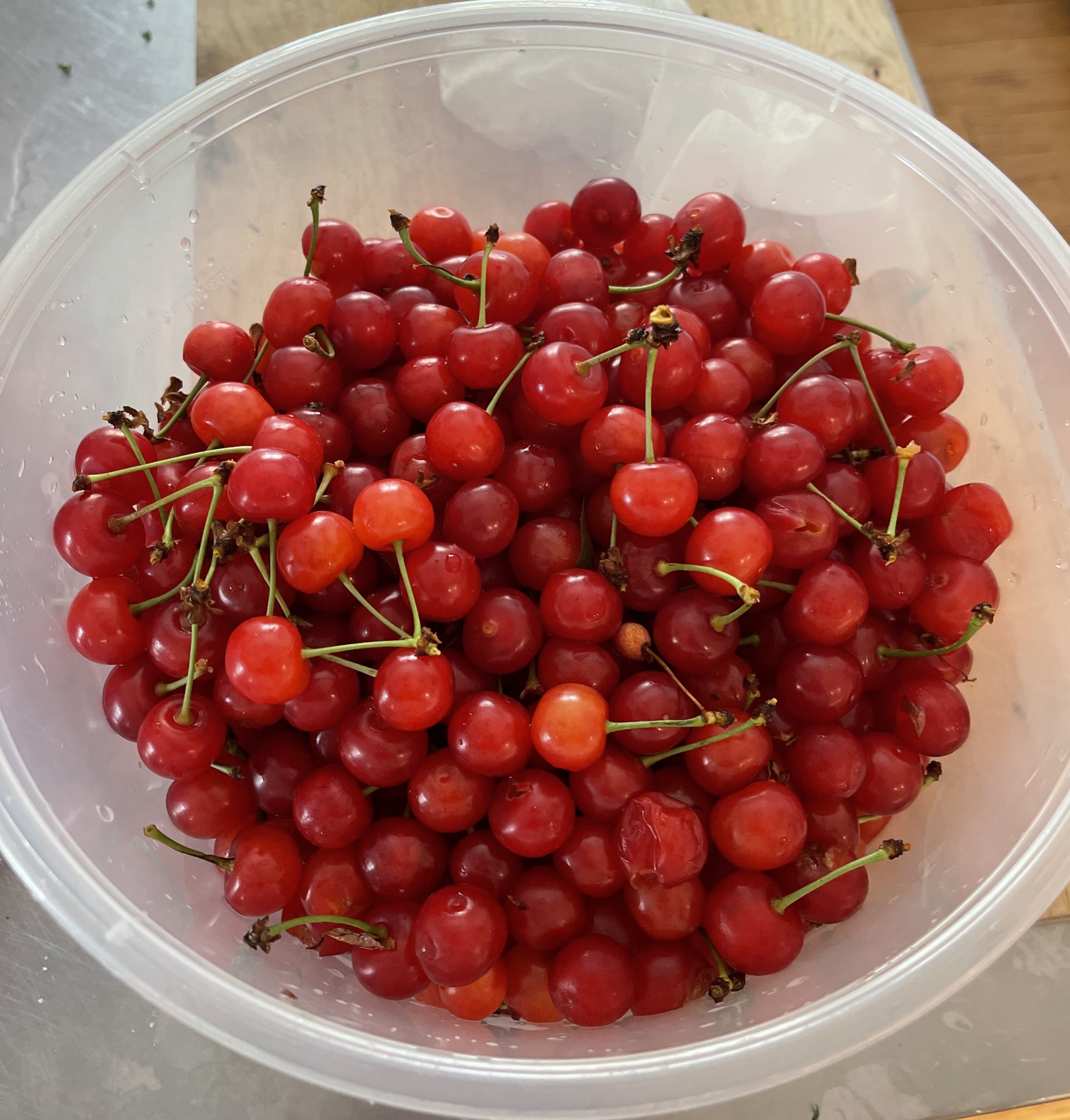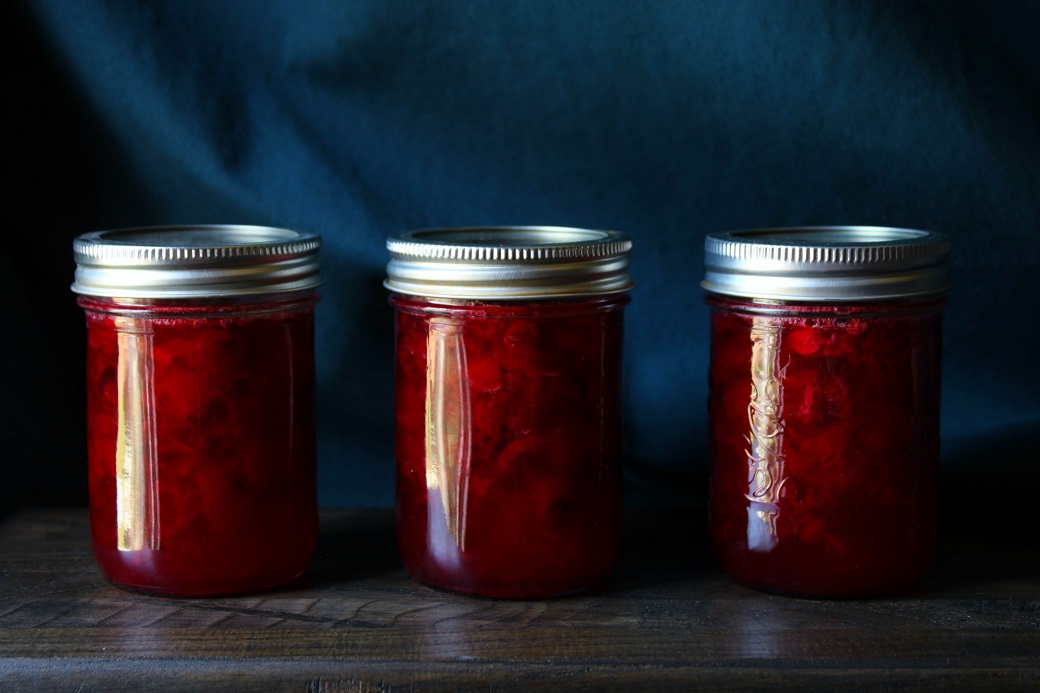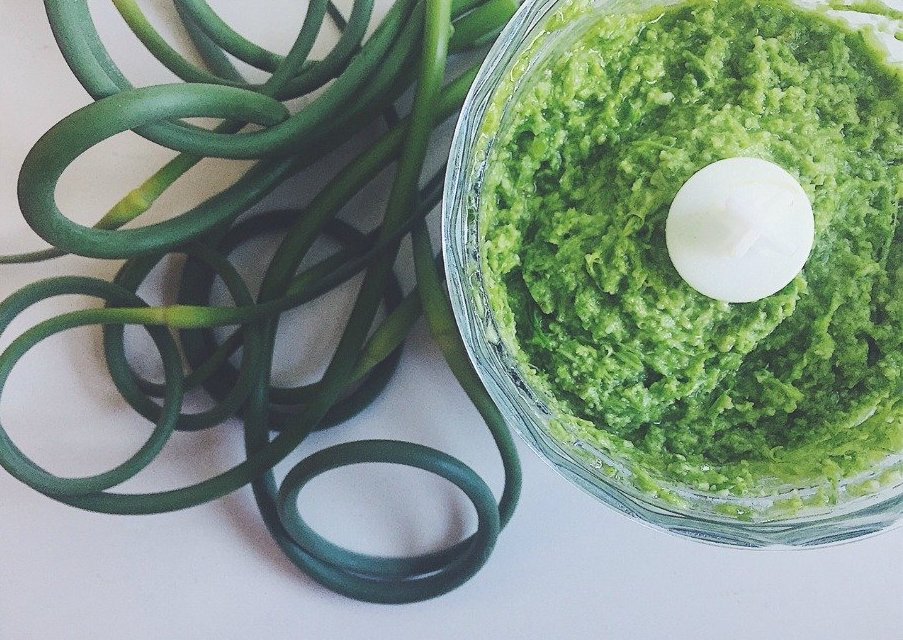
Now that my smallish garden is planted, it seems timely to share that I’m a HUGE fan of the bounty of other folks’ gardens! I am the person who loves arriving home after work to find someone has left a bag of overgrown squash, a bucket of pears or there’s some drop apples on my porch. Looking for a spot to deposit a mutant zucchini that isn’t destined for your compost pile? My car or porch are always welcoming! I love these unanticipated treasures. I am also someone who will volunteer to come over to harvest the last of your garden’s goodness when you are d-o-n-e with it and there are veggies still ready to be picked.
I first thought about writing this over the winter when I was making zucchini bread from the overgrown zucchinis some kind soul left on my porch the previous summer. Grated and tucked into the freezer, I made zucchini cake, bread and pancakes all winter long. I revisited the idea of writing about this topic recently and decided that writing it now might also serve to remind my gardening friends that my porch or car are always a welcome spot for their surplus :-)
This past weekend the 2021 garden gifts started. Our neighbors Tom and Margaret have a sour cherry tree in their yard (in addition to a couple of great Macintosh trees) and Tom showed up on Sunday afternoon with a bowl full of sour cherries. I secured a friend’s plunge pitter and my husband pitted and cleaned the gallon of cherries. Tucked into the freezer, I have plans for sour cherry hand pies later this month. I am also planning to send the husband and his ladder to harvest more cherries for sour cherry jam. Yesterday I dropped off a jar of strawberry jam I made earlier this week in thanks for the cherries. This garden gift economy isn’t a one way street.

Just so you don’t think that I am immune to culinary faux pas, I was so eager to process last year’s sour cherries into jam (it is one of my favorites) that I was a bit overzealous with the cherry pitting and managed to split several pits and those bits got into my jam. I didn’t realize my error until AFTER the jars were sealed and stored. The resulting jam is still yummy, but does require close inspection before spreading on your toast. If the cherry pitting debacle isn’t enough of a kitchen mishap for you, I need only mention the lacto-fermenting cauliflower of 2020 to elicit a groan from my family. It took a month and a lot of odor absorbing products to get that unpleasant smell out of the house. At that moment, my efforts to preserve the harvest were not appreciated.
I cannot claim that this interest in scavenging from other gardens was learned from any one person in my life because it was something I saw all the time in my extended family. If you had more than you needed or could process before spoiling became an issue, there was always someone else interested in taking it off your hands. A bit of canning or prepping for the freezer was something I remember doing after supper or on Sunday afternoon. It was rarely a marathon day preserving unless there was a bumper crop, and more like grabbing time here and there when the ingredients were at their peak. To me, these moments of time scattered throughout the week to make a few jars of bread and butter pickles or start a batch of marinara sauce don’t feel like effort because we will benefit fourfold in the year to come when I can pull together a dinner from what I put up over the summer.
Please don’t think with all this preserving that we aren’t enjoying these goodies while they are fresh. My general goal is to tuck at least half of the food away for later and enjoy the rest of it now. As of right now I have put up 20 jars of strawberry jam, but we have also eaten our fair share of fresh berries, strawberry rhubarb crisp and pie. This batch should keep us in strawberry jam until the berries are ready for picking next year and several jars will go into presents at Christmas. I am also experimenting with lacto-fermenting garlic scapes (i.e. brine pickled) and have some in the dehydrator to make garlic powder and some will go to making garlic scape pesto for the freezer. Between my experiment with growing garlic for the first time, the garlic scapes I get from Rustic Roots Farm and friends who share their unused scapes, I’ve had a lot to work with. There is also already a jar of kale/collard sauerkraut fermenting from the harvest of collards and lacinato kale that self-seeded from last year’s garden.
If you added up the hour here and there, I probably do spend quite a bit of time in the summer/early fall “putting up” food for the winter. I can tomatoes, salsa, green beans, applesauce and jams. I make sauerkraut, pickles and other lacto fermented vegetables. I also dehydrate extra fruit and try to make sure none of the harvest goes to waste.
Sour Cherry Jam
3 lbs sour cherries (2 1/2 lbs pitted, or 5 cups pitted)
2 tbsp lemon juice
2 cups sugar
½ tsp almond extract or 1 tbsp amoretto
Pit fresh 3 lbs sour cherries. If working with pitted fruit, the total weight should be about 2 1/2 lbs pitted, or roughly 5 cups pitted fruit.
Place the fruit in a heavy-bottomed pot along with lemon juice. Bring to a boil over medium-high heat.
Cook the cherry mixture, stirring continuously to avoid boil-overs, for about 20 minutes until the fruit has completely fallen apart.
Add sugar and continue cooking the jam until it reaches gel stage, about 25 to 30 more minutes. Test for gel stage on a plate that’s been placed in the freezer, or with an instant-read thermometer (220F).
Add almond extract
Turn off heat and ladle jam into prepared jars. Make sure there aren’t any bubbles in the jam, wipe rims and adjust headspace to 1/4 inch. Store in the refrigerator for immediate use (within 1 month), or process in a water bath for 10 minutes for a shelf-stable jam.
Garlic Scape Powder
Wash and dry the scapes and chop them into 1/4″ pieces. Place in a food dehydrator and dehydrate for 6-8 hours. Remove from the dehydrator and run it through a spice grinder with a little coarse salt to turn into powder.

Lacto Fermented Garlic Scapes
4 cups water
2 tbsp salt (I use Diamond Crystal Kosher salt)
½ tsp. coriander seeds
½ tsp. fennel seeds
⅛ tsp. black pepper
½ tsp. red pepper flakes
1½-2 dozen fresh garlic scapes
Snip the papery end of the flower with a pair of kitchen shears, keeping about 1 ½ inches of the flowering end. If your garlic scapes are more mature, snip any tough stem end, too.
Stir the salt into the water until dissolved to make the brine, and set aside.
Add spices to the bottom of a sterilized quart jar and arrange the scapes in the jar. Cover them with brine. Weigh the scapes down with a glass fermentation weight or small ziplock bag filled with water, and then seal the jar. Allow the scapes to ferment at room temperature for 6 weeks. Transfer to the fridge when the scapes are sour enough for your liking, and consume within 1 year.
Garlic Scape Pesto
2 cups fresh garlic scapes (roughly 24 scapes)
½ cup sunflower seeds
1 cup extra virgin olive oil
1 cup basil
½ cup Parmesan cheese
2 lemons, juiced
Remove the woody end of garlic scapes and set aside.
Slice scapes crosswise, add to food processor. Pulse for 30 to 40 seconds. Scrape scapes down into the bowl.
Add sunflower seeds, pulse for 15 seconds.
Next, add olive oil and Parmesan cheese, pulse for an additional 15 seconds.
Finally, add basil and lemon juice. Pulse until the desired consistency is achieved.
To store this garlic scape pesto recipe long-term I fill ice-cube trays and once it is frozen remove the pesto from the tray and store in vacuum sealed bags for up to 12 months.
Notes: Reserve the woody ends of the scapes for making soup or broth. I keep them in a small plastic bag in the freezer. I do the same thing with the woody ends of fresh asparagus.





